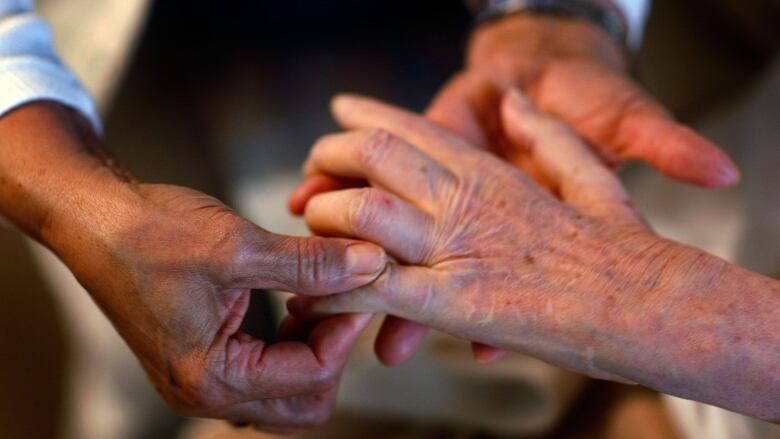Sask. expands visitation for long-term care residents and patients in critical care, ICU
SHA to provide masks to visitors

The Saskatchewan Health Authority (SHA) says long-term care residents, patients in critical care and ICU patients will now be able to have more visitors.
SHA restricted visitors beginning March 14 due to concerns over COVID-19 transmission. The restrictions were expanded to all SHA facilities on April 23, with exceptions for those visiting for compassionate reasons.
SHA CEO Scott Livingstone said on Wednesday that continuing restrictions of visitors to the province's most vulnerable was "not sustainable."
He said the changes came due to feedback from residents, patients and families, and the low level of activeCOVID-19 cases currently in the province.
The changes were developed by a panel comprised of patients, family members of patients and public health infection control experts.
"We worked hard together to review this and come up with adjustments that still ensure we are protected when living or coming into these facilities," said Heather Thiessen, a patient and family advisor on the SHA's family presence expert panel.
"Like so many others, I need my partner there with me if I require emergency care. Otherwise, I am in danger of not understanding or being able to communicate what is happening to me to my care providers."
On Wednesday, the SHA said implementation of the new visitation rules willbegin next week, with the exception of long-term care, where they will start immediately. The visitation guidelines for long-term care will apply to both public and private facilities.
Long-term care
"For residents in long term care, quality of life considerations will now be used in addition to care needs to determine if these needs cannot be met without the support of a designated familymember or support person. In these situations, two family members/support people can be designated with one family/support person present at a time."
Critical and intensivecare
"All critical care and intensive care patients are now included in the compassionate care definition (previously limited to those at high risk for loss of life) and family presence for palliative care has been expanded to facilitate two family members/support people being present at the same time."
ER, inpatientand outpatient care
"Guidelines have also been revised to ensure that it is clear that there can be one family member or support person for inpatient, outpatient, emergency/urgent care patients who have specific challenges resulting in compromised comprehension, decision making or mobility due to disability or onset of a medical condition. This could include mobility, hearing, speech including communication barriers, intellectual or mental health disability, and visual or memory impairment."
The SHA also said outdoor visits are not limited to one person at a time.
Masks to be provided to visitors
The SHA said it will provide medical-grade masksto all outpatients and family members/support persons visiting SHA homes and facilities. All will be asked to wear their mask for the duration of theirvisit.
Livingstone saidin early March the "first priority" was to prevent the spread of COVID-19 byprotecting patients, residents, staff and visitors.
"We needed to tightly control who was coming into our facilities given the potential consequences for our long-term care residents and our patients. That hasn't changed.".
"But we have also learned that we need find the right balance between physical safety and mental health and well-being. We have heard that clearly from our residents, patients and families. So, together, we are trying to find the right path forward in the weeks and months ahead," Livingstone said.












_(720p).jpg)


 OFFICIAL HD MUSIC VIDEO.jpg)
.jpg)



























































































